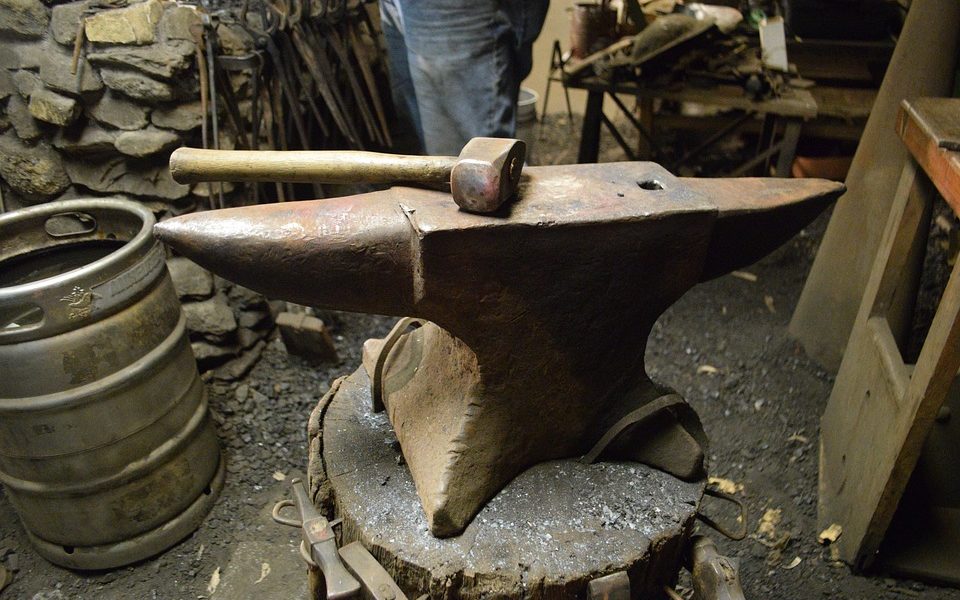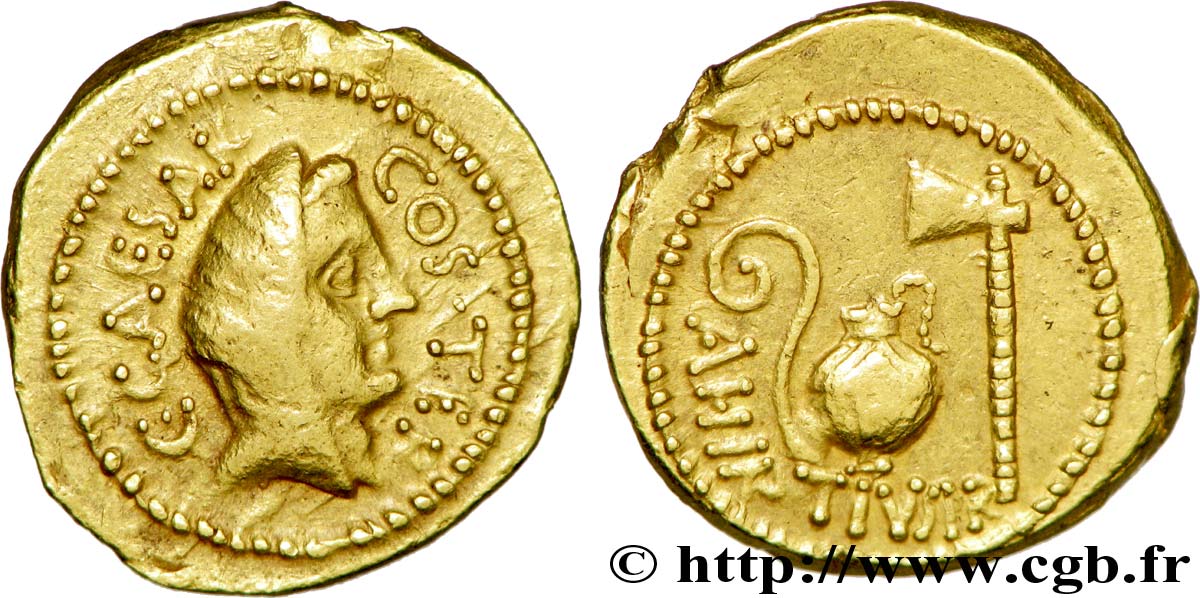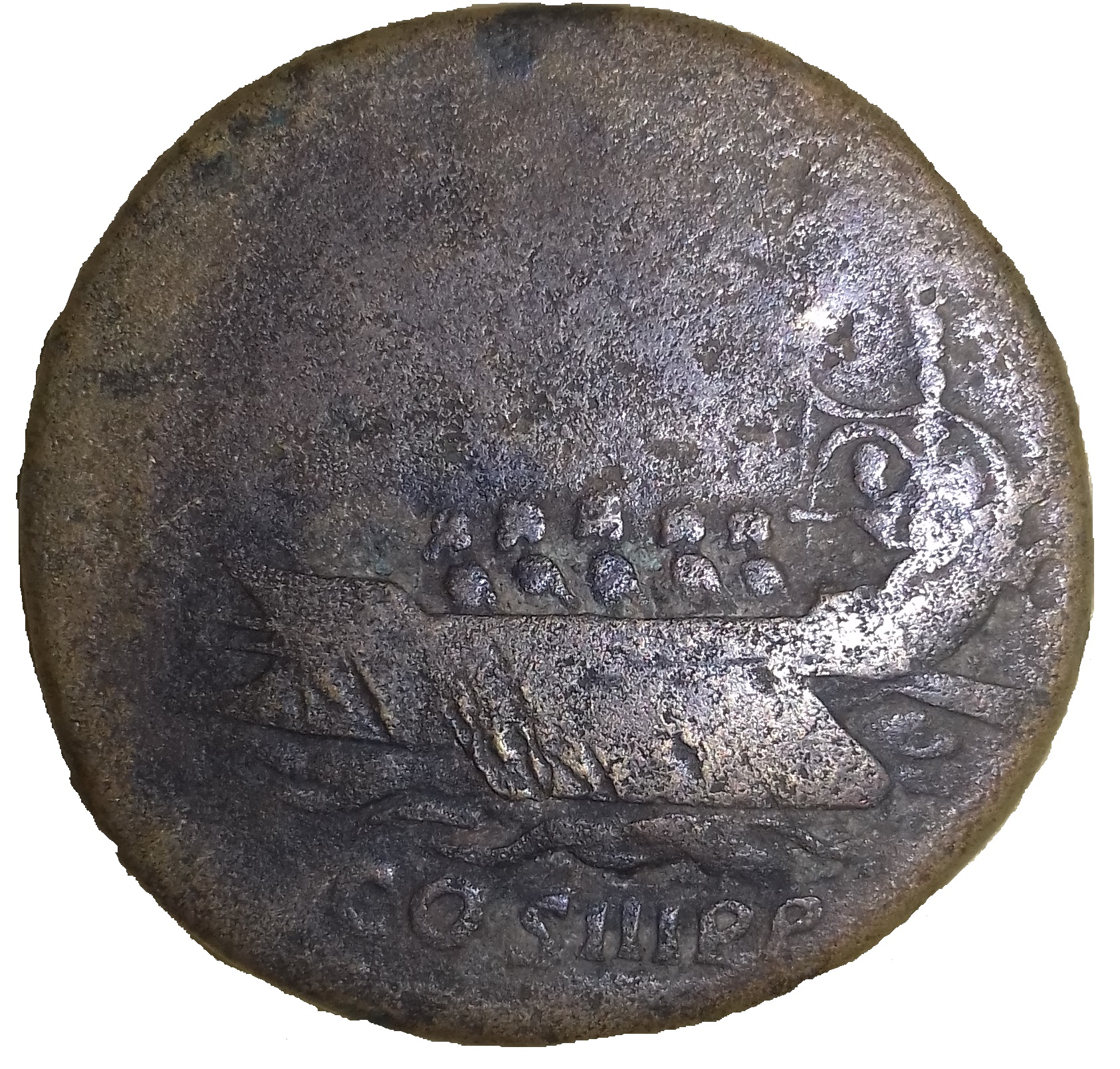Hi, as I announced in the previous article, I will speak today about the environment of the manufacture of Roman coins. So we’ll see who created it, how it circulated, who received it….Finally everything from manufacturing to its use under the Roman Empire. Have a good read.
Who created the coin ?
First of all, you should know that Roman coins, in order to be manufactured, were minted. This consists of putting a washer, called “flan”, of copper, silver, gold … depending on the coin you want to get between two wedges. The flans, were made by workers and these had to be very precise because the value of the future coin depended on the weight of the flans. The “wedges” are steel cylinders on which are inscribed the inscriptions to appear on the coin. There is one for the avers and one for the reverse. It is estimated that each wedge could be used for about 5000 coins. Thus, the future coin is placed between these two cylinders and a hammer blow was carried on the top wedge to print both sides of the coin.
It works a bit like the “etching” print. Without going into detail, a copper plate with embossed inscriptions was pressed against a sheet of paper. And so hollows of the shape of the scriptures appeared and were filled with ink. It’s kind of the ancestor of the printer.
To get back to the coins, the wedges had to be made. But who created them? Quite simply, he was an engraver who must have had a lot of talent and therefore burned the wedges with a hammer and a needle. It must have been a long and tedious task. Thus, many engravers throughout the Roman Empire fulfilled this function.
Why can’t any change look the same?
No coin is like any other. Indeed, the wedges wore out with time and use and therefore the details were less and less precise. Or the wedges broke when the strike. Moreover, on some coins, we can see a kind of crack along the entire length of the coin. This crack is only on one side, so it was made during the manufacture. The wedge then struck and certainly worn, simply broke in two and the mark remained forever on the coin. As a result, wedges that were too worn to be reused or broken were replaced. So the engravers created others and as the wedges were handmade, none were similar and therefore, the coins too.
Now, who was minting the coin?
The coin was therefore hit by workers who carried out this action all day. It had to be a long-term task because given the rather substantial reliefs of some coins, one can imagine the strength it took to have such a result. In addition, the hammers were more than 1 meter long. As a result, it had to be difficult to handle, so it had to be hard to be precise. You can see that when you see the decentral work of certain coin.
Where were the coins made?
The coins were made in monetary workshops. These places brought together all the craftsmen involved in the making of the coins and were therefore real factories of coins. They were scattered throughout the Roman Empire and each workshop had its own markings. Indeed, there was of course the “common trunk” as the legends of the avers and the reverse or the “drawings” appearing on the coins. But in the legend of the reverse, each workshop added its mark: the workshop letter. It could be one or more letters and they had the function of informing about the place where the coins were made.
Among the most important monetary workshops, we have Rome (R, RM, ROMA, VRB, ROM, ROMOB), Lyon or Lugdunum at the time (L, LG, LVGD, LVGPS, PLG, LA, LB, PL, LP, SML) or Trier (TRE, TROB, TR, ATR, STR, BTR, IITR, PTR, PTRE, SMTR, SMTR, SMTR , TRS, TRP, TROB, TRPS) to name a few.
How did coins flow?
Roman coins circulated throughout the Roman Empire. This is mainly through merchants. In fact, at the time, people could not move as easily as we do today. They lived mainly in their city where they resided or went to the surrounding towns but rarely further afield. As a result, they were not the ones who circulated the coins, but the merchants. Indeed, the merchants went from town to town. As a result, the coins they had, travelled with them and ended up far from their original location.
However, it was not only merchants who made the coins “travel”. Indeed, following the wars and the new lands conquered, the Romans settled there and thus took their coins with them. There were also some kind of “gifts” that Rome sometimes gave to these provinces. This helped them develop this and maintain relative peace. But as far as we’re concerned, it was circulating Roman coins. Now that coin was circulating.
But who was getting the coin ?
As mentioned earlier, some provinces received “subsidies” from Rome, but others also received money. Just like today, people were paid for their work. Either by the state or by a boss or by herself if the person was living from her activity. On the other hand, slaves were not paid. However, some so-called “public” slaves received meagre wages. Also, the state, of course, received money. As a result, the Romans paid taxes but also fines, taxes, customs fees … and it all went to the treasury.
What was the money for?
The usefulness of money was not much different from its current usefulness. Indeed, the Romans used it to buy food, clothes, houses, slaves (for the latter case, it changed a little today), … For the state, the money was used to finance projects (aqueducts, baths …), urbanizations (roads, cities …), the construction of buildings … But also and above all, the money was used to finance the army. It is estimated that 40-70% of the state budget was used for the military. Of course, these figures varied according to the situation of the Empire: whether it was at war or in peace, how many soldiers there were …
Latest information
Italy under the Empire was the richest region in the world. In this sense, Roman citizens lived on an average of 50% more income than other provinces. As a result, the Roman economy was rather well-established for its time.
That’s it, this article is over. I hope you enjoy it and discover new things. Say in the comments about what topic you would like me to speak for a future article. As for this week’s article, I will introduce you to “The Lexicon of the Roman Empire.” See you next week!
Get my book Around the Roman Coin for free by clicking here




